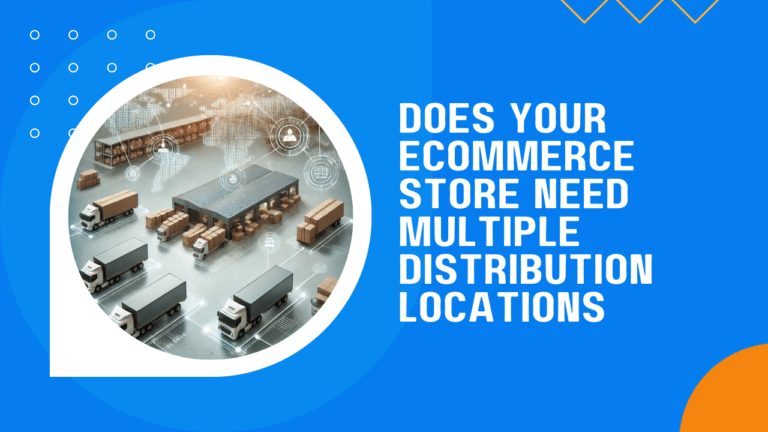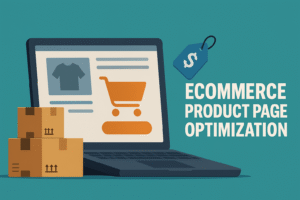For ecommerce businesses, fast and cost-effective order fulfillment is essential for customer satisfaction and long-term success. One of the most important decisions retailers face is whether to operate multiple distribution centers or centralize fulfillment from a single location. While having multiple warehouses can reduce shipping times and costs, it also comes with increased operational complexity and overhead expenses.
So, does your ecommerce store need multiple distribution centers? The answer depends on factors such as customer locations, order volume, product type, and growth projections. In this article, we’ll explore the advantages and challenges of multi-location warehousing, discuss key considerations before expanding, and highlight alternatives that can optimize fulfillment without requiring multiple sites.
We’ll also examine how ShipBuddies’ strategic fulfillment approach helps ecommerce businesses efficiently manage logistics from a single Florida-based distribution center, providing cost-effective and scalable shipping solutions. Let’s dive in!
Benefits of Multiple Distribution Centers
Expanding to multiple distribution centers can provide ecommerce businesses with several strategic advantages, particularly when it comes to shipping efficiency, cost reduction, and inventory management. However, while multi-location fulfillment has its benefits, it’s important to assess whether these advantages align with your business model and customer needs.
Reduced Shipping Times
One of the most significant benefits of multiple distribution centers is the ability to position inventory closer to customers, leading to:
- Faster delivery times, enhancing customer satisfaction.
- Lower risk of shipping delays due to regional disruptions.
- Competitive advantage over retailers that rely on centralized fulfillment.
For example, an ecommerce store with customers across the U.S. could distribute inventory between East Coast, West Coast, and Midwest fulfillment centers, ensuring two-day or next-day shipping to a broader audience.
Lower Shipping Costs
Shipping costs are largely influenced by the distance between the fulfillment center and the customer. With multiple distribution centers, businesses can:
- Use ground shipping instead of air freight, reducing costs.
- Access regional carrier rates, leading to better pricing.
- Offer free or discounted shipping incentives without cutting into profits.
By storing products in multiple locations, businesses can minimize Zone 7 and Zone 8 shipments, which are the most expensive, and maximize Zone 1 and Zone 2 deliveries, where costs are significantly lower.
Improved Inventory Management
Operating multiple fulfillment centers can also lead to better inventory distribution and stock management, including:
- Reducing stockouts by distributing inventory across regions based on demand.
- Minimizing overstocking in areas where certain products are less popular.
- Increasing fulfillment efficiency by shipping from the nearest available location.
For example, if certain seasonal products (e.g., winter gear) sell better in the Northeast than in the South, having a dedicated distribution center for those products in the right region can prevent inventory imbalances.
Increased Business Continuity and Risk Mitigation
Disruptions like weather events, supply chain delays, or labor shortages can severely impact fulfillment operations. With multiple distribution centers, businesses can:
- Redirect orders to alternative warehouses if one location faces delays.
- Reduce reliance on a single point of failure, ensuring continuity.
- Improve disaster recovery plans by diversifying inventory locations.
This redundancy helps ecommerce businesses avoid major disruptions and maintain consistent order fulfillment even in challenging circumstances.
When Should a Business Consider Multiple Distribution Centers?
While multiple warehouses offer clear benefits, they are not the right fit for every business. This model is most effective for:
- Ecommerce stores with a national or global customer base that requires fast shipping.
- Businesses that handle high order volumes and need to reduce fulfillment strain on a single location.
- Retailers selling time-sensitive products where fast delivery is crucial.
- Companies experiencing rapid growth that need scalable fulfillment solutions.
Utilizing multiple distribution centers can enhance shipping speed, reduce costs, improve inventory management, and minimize fulfillment risks. However, before expanding, businesses must weigh the operational complexities and additional costs involved.
Next, we’ll explore key considerations businesses should evaluate before committing to multiple distribution locations, including overhead costs, operational challenges, and technology integration requirements.
Considerations Before Expanding to Multiple Locations
While multiple distribution centers can improve shipping efficiency and inventory management, they also introduce operational challenges and added costs. Expanding to multiple locations requires careful planning, investment in technology, and a clear understanding of demand patterns to ensure it benefits the business rather than complicates fulfillment.
Below are the key factors ecommerce businesses should evaluate before committing to multiple distribution centers.
Increased Operational Complexity
Managing multiple warehouses adds layers of complexity to inventory distribution, staffing, and fulfillment coordination. Businesses must account for:
- Inventory synchronization across multiple locations to prevent stock imbalances.
- Coordinating order fulfillment to ensure items ship from the most efficient center.
- Higher labor and management demands, requiring more oversight and workforce training.
Without strong logistics infrastructure and automation, businesses may struggle to keep fulfillment operations streamlined across multiple locations.
Higher Overhead Costs
Operating additional distribution centers comes with significant financial commitments, including:
- Warehouse leasing or purchasing costs in multiple locations.
- Increased labor expenses for warehouse staff and management.
- Higher utility and operational costs associated with maintaining multiple facilities.
For smaller or mid-sized ecommerce stores, these costs may outweigh the benefits of reduced shipping times, making centralized fulfillment a more cost-effective option.
Technology and Integration Challenges
To effectively manage inventory and order fulfillment across multiple locations, businesses need robust logistics technology that provides:
- Real-time inventory tracking to prevent stockouts or overstocking.
- Automated order routing to ship products from the nearest warehouse.
- Seamless integration with ecommerce platforms like Shopify, WooCommerce, and Amazon.
Without a warehouse management system (WMS) and order management system (OMS) in place, businesses may face delays, mis-shipments, and inventory discrepancies.
Customer Location and Demand Analysis
Before opening multiple distribution centers, businesses should analyze where their customers are located and whether regional fulfillment would improve delivery efficiency. Consider:
- What percentage of your orders come from different regions?
- Are customers willing to wait slightly longer for free or lower-cost shipping?
- Would a strategically placed warehouse significantly reduce delivery times?
For some businesses, one centrally located fulfillment center may be more cost-effective than multiple warehouses with limited regional benefits.
Product Characteristics and Storage Needs
Certain products may not require multiple fulfillment centers, while others may benefit significantly. Factors to consider include:
- Shelf life – Perishable goods may require regional distribution to ensure freshness.
- Size and weight – Large or heavy products can incur high shipping costs, making local fulfillment centers beneficial.
- Customization needs – If products require personalization or assembly, it may be more efficient to consolidate operations in one location.
When Expanding to Multiple Locations Makes Sense
Despite the challenges, multiple distribution centers can be a smart investment if your business:
- Has high order volumes and needs to speed up fulfillment.
- Serves a national or global customer base with demand spread across regions.
- Sells time-sensitive products where delivery speed is a major factor.
- Has the technology infrastructure to manage multiple warehouses efficiently.
Expanding to multiple distribution locations is a major decision that requires careful cost analysis, logistics planning, and technology investment. While faster delivery times and lower shipping costs are attractive benefits, businesses must ensure they have the resources and systems in place to handle the increased operational demands.
Next, we’ll explore how businesses can assess whether multiple distribution centers are the right choice based on customer demand, order volume, and product type.
Assessing Your Business’s Need for Multiple Distribution Centers
Expanding to multiple distribution centers can improve fulfillment efficiency, but it’s not a one-size-fits-all solution. Before making this investment, businesses must analyze key operational factors to determine whether multi-location fulfillment aligns with their goals and customer needs.
Here are the critical aspects to evaluate when deciding if your business should operate multiple distribution centers.
Customer Demographics and Locations
The geographic distribution of your customer base plays a major role in whether additional fulfillment centers are necessary. Consider:
- Where do most of your orders originate?
- Are there significant shipping delays for customers in certain regions?
- Would additional warehouses meaningfully reduce delivery times?
If your customer base is concentrated in specific regions, opening regional fulfillment centers could reduce transit times and shipping costs. However, if orders are evenly distributed across the country, a centralized fulfillment model may be just as effective.
Order Volume and Growth Projections
The number of daily, weekly, or monthly orders your business processes is another key factor. A high-volume ecommerce store may benefit from multiple locations, while a smaller business may not see enough cost savings to justify expansion.
Ask yourself:
- Is your order volume large enough to sustain multiple warehouses?
- Are you experiencing fulfillment delays due to overwhelming demand at a single location?
- Do your future growth projections justify the investment in multiple facilities?
If your business is scaling rapidly and facing fulfillment bottlenecks, expanding distribution may be a viable solution. However, if order volume is inconsistent, maintaining a single, well-optimized fulfillment center might be more cost-effective.
Product Characteristics and Storage Requirements
Not all products benefit from multi-location fulfillment. Some products require special handling, long-term storage, or customized packaging, which may be easier to manage from a single warehouse.
Consider these product factors:
- Perishability – Fresh food, cosmetics, and pharmaceuticals may require regional distribution for quality control.
- Size & Weight – Bulky or heavy products may be expensive to ship long distances, making regional storage more efficient.
- Customization – Personalized or made-to-order products may be better suited to a centralized fulfillment model to maintain consistency.
If your products are time-sensitive or have high shipping costs, multiple distribution centers may improve efficiency. Otherwise, a single, well-placed fulfillment center may be sufficient.
Shipping Speed Expectations
Today’s customers expect fast and affordable shipping. If offering same-day, next-day, or two-day delivery is crucial for your business, multiple warehouses can help achieve this.
Ask yourself:
- Are customers abandoning carts due to long shipping times?
- Would shorter delivery times increase customer satisfaction and retention?
- Can faster fulfillment provide a competitive edge in your industry?
If your business operates in a highly competitive ecommerce space where shipping speed is a major selling point, multiple distribution centers could enhance your customer experience and conversion rates.
Cost vs. Benefit Analysis
Ultimately, businesses must weigh the costs of running multiple distribution centers against the potential savings and efficiency gains. Key considerations include:
- Warehousing costs – Leasing or buying additional space increases overhead expenses.
- Staffing requirements – More locations require more employees for management and operations.
- Technology investment – Managing multiple warehouses requires robust inventory and order management systems.
- Shipping savings – Shorter shipping distances reduce carrier costs, but are these savings significant enough to justify expansion?
If the added operational complexity and expenses outweigh the benefits of reduced shipping times, it may be more practical to optimize a single fulfillment center instead.
Before committing to multiple distribution centers, businesses should evaluate customer location, order volume, product needs, shipping expectations, and overall costs. While multi-location fulfillment can improve efficiency, it’s only beneficial if it aligns with demand and growth projections.
Next, we’ll explore alternatives to multiple distribution centers, such as partnering with a 3PL provider or using cross-docking strategies to streamline fulfillment without the burden of maintaining multiple warehouses.
Alternatives to Multiple Distribution Centers
For many ecommerce businesses, operating multiple distribution centers may not be the most cost-effective or efficient solution. Instead, alternative fulfillment strategies can help optimize shipping times, reduce costs, and improve customer satisfaction—without the complexities of managing multiple locations.
Below are alternative approaches that provide similar benefits to multi-location warehousing while keeping logistics operations streamlined.
Partnering with a 3PL Provider
Third-party logistics (3PL) providers offer a scalable alternative to maintaining multiple distribution centers. A 3PL handles warehousing, order fulfillment, and shipping on behalf of businesses, allowing them to focus on sales and growth.
Benefits of Using a 3PL Instead of Multiple Warehouses:
- Lower overhead costs by outsourcing warehousing and fulfillment operations.
- Advanced logistics technology for real-time tracking, inventory management, and automated order processing.
- Scalability during peak seasons without long-term commitments to warehouse leases.
For example, ShipBuddies offers a Florida-based fulfillment solution that allows businesses to streamline their shipping operations without needing multiple distribution centers.
Cross-Docking for Faster Order Fulfillment
Cross-docking is a logistics strategy where products move directly from inbound shipments to outbound transportation with minimal storage time. Instead of storing inventory in multiple warehouses, businesses use cross-docking terminals to sort and ship goods efficiently.
Advantages of Cross-Docking:
- Reduces warehousing costs by eliminating the need for long-term storage.
- Shortens order fulfillment times by moving inventory quickly through the supply chain.
- Minimizes inventory holding risks, especially for perishable or seasonal products.
Cross-docking works well for businesses with high-turnover inventory that need rapid order processing and just-in-time shipping.
Utilizing Regional Fulfillment Centers from Major Carriers
Many shipping carriers, including UPS, FedEx, and USPS, offer regional fulfillment services that allow businesses to store inventory closer to customers without investing in multiple distribution centers.
How Regional Carrier Fulfillment Works:
- Businesses pre-position inventory in carrier-owned fulfillment centers.
- Orders are shipped from the nearest location to reduce delivery times.
- Carriers provide automated fulfillment and tracking services to optimize logistics.
This option is ideal for ecommerce brands that need nationwide coverage but don’t want the responsibility of managing multiple warehouses.
Dropshipping for Inventory-Free Fulfillment
For businesses looking to avoid warehousing altogether, dropshipping provides a low-risk fulfillment strategy. With dropshipping, orders are fulfilled directly by the supplier or manufacturer, eliminating the need for inventory storage.
Key Benefits of Dropshipping:
- No need for multiple distribution centers or warehouse management.
- Lower upfront costs since inventory is only purchased when a sale is made.
- Ability to expand product offerings without investing in stock.
While dropshipping reduces fulfillment complexity, businesses sacrifice control over inventory and shipping speeds, making it better suited for specific product categories or testing new markets.
Optimizing a Single, Strategically Located Fulfillment Center
Instead of expanding to multiple distribution centers, businesses can enhance operations at a single, well-placed warehouse to achieve similar efficiency gains.
Ways to Optimize a Single Fulfillment Center:
- Select a strategic location that minimizes shipping zones and costs.
- Leverage automation for faster order processing and inventory accuracy.
- Negotiate better shipping rates with carriers for expedited delivery.
- Implement warehouse optimization techniques such as zone picking and batch processing.
Which Alternative is Right for Your Business?
Not every business requires multiple distribution centers to achieve efficient fulfillment. Instead, companies should consider:
✔ 3PL partnerships for scalable, outsourced logistics solutions.
✔ Cross-docking to speed up order fulfillment without added warehousing.
✔ Regional carrier fulfillment for pre-positioned inventory at strategic locations.
✔ Dropshipping for inventory-free order fulfillment.
✔ Optimizing a single warehouse for efficient, centralized fulfillment.
By leveraging these alternatives, businesses can reduce costs, maintain fulfillment speed, and scale operations—without the challenges of managing multiple distribution centers.
Making the Right Fulfillment Choice for Your Business
Deciding whether to expand to multiple distribution centers is a major strategic decision for ecommerce businesses. While multi-location fulfillment can offer faster shipping times, lower costs in certain cases, and improved inventory management, it also introduces higher operational complexity and significant overhead expenses.
For many businesses, alternative fulfillment strategies—such as partnering with a 3PL provider, utilizing regional carrier fulfillment, implementing cross-docking, or optimizing a single distribution center—can achieve similar benefits without the logistical burden of managing multiple warehouses.
Before committing to multiple fulfillment locations, consider:
✔ Customer demand and geographic distribution – Where are your customers located? Would multiple warehouses significantly improve delivery times?
✔ Order volume and growth projections – Does your current sales volume justify the cost of expanding to multiple locations?
✔ Product type and storage needs – Do your products require regional distribution, or can they be efficiently fulfilled from one location?
✔ Operational capabilities – Does your business have the technology, staff, and logistics expertise to manage multiple warehouses efficiently?
For businesses looking to streamline fulfillment without the complexity of multiple warehouses, ShipBuddies offers a strategic, Florida-based distribution solution that provides fast, cost-effective shipping across key markets.
Find the Right Fulfillment Strategy for Your Business
Every ecommerce business has unique logistics needs. Before expanding to multiple distribution centers, weigh the costs, benefits, and available alternatives. If you’re looking for a scalable fulfillment solution without the challenges of managing multiple warehouses, ShipBuddies can help.









